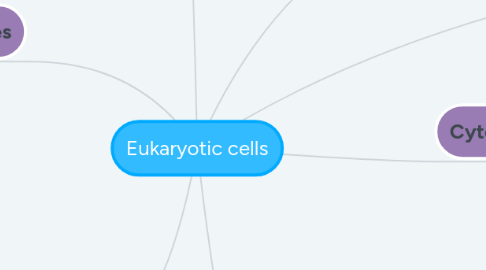
1. Endomembrane system
1.1. Nuclear envelope
1.2. Golgi apparatus
1.2.1. Modifies lipids and proteins from the ER; sorts them and packages them in vesicles
1.3. Membrane of ER
1.3.1. Rough endoplasmic reticulum
1.3.1.1. Synthesizes proteins and packages them in vesicles ; vesicles commonly go to Golgi apparatus
1.3.2. Smooth endoplasmic reticulum
1.3.2.1. Synthesizes lipids and performs various others function
1.4. Vesicles
1.4.1. Transport vesicles
1.4.1.1. Shuttles proteins and lipids to various locations such as Golgi apparatus
1.4.2. Secretory vesicle
1.4.2.1. Fuses with the plasma membrane as secretion occurs
2. Microbodies
3. Others
3.1. Centrioles
3.2. Cilia
3.3. Flagella
4. During photosynthesis, chloroplasts use solar energy to synthesize carbohydrates
5. Nucleus and ribosome
5.1. Nuclear pore
5.1.1. Allow the transport of molecules across the nuclear envelope
5.2. Nuclear envelope
5.2.1. Double membrane with nuclear pores that encloses nucleus
5.3. Chromatin
5.3.1. Diffuse threads containing DNA and protein
5.4. Nucleolus
5.4.1. Region that produces subunits of ribosomes
5.5. New node
6. Energy-related organelles
6.1. Chloroplast
6.1.1. Photosynthesis can be represented by this equation :
6.1.1.1. Solar energy + carbon dioxide +water -> carbohydrate + oxygen
6.1.1.1.1. In cellular respiration, mitochondria break down carbohydrate-derived products to produce ATP
6.2. Mitochondria
6.2.1. Cellular respiration can be represented by this equation
6.2.1.1. Carbohydrate + oxygen -> carbon dioxide + water + oxygen
